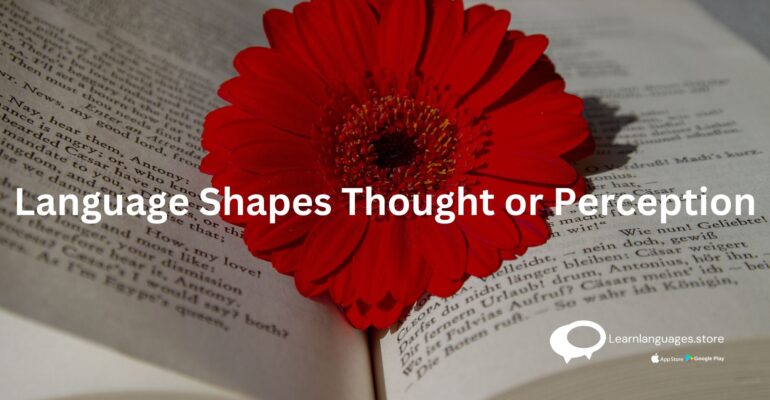Language Shapes Thought or Perception
Language Shapes Thought or Perception
Language Shapes Colors, Space, and Time
My Kiswahili teacher taught us something profound about how language affects how we see others. In the course, he showed us how a noun class identifier meant to represent “things” actually represented a disabled person.
Let me demonstrate:
In my professor’s example, kiti meant “chair” because “ki” is the object signifier.
Mtoto means “child” because “m” is a noun signifier.
Kipofu is the word for blind people.
By using “ki” instead of “m,” the blind person was referred to as an object.
Language Power:
The professor stated that terms used to refer to objects and people showed cultural beliefs. Using this noun class to refer to disabled people implied that disabled people were things, not people.

Mpofu, a new name for blind people, reflects modern cultural norms.
The language’s adoption is another matter. Language shapes our thoughts, attitudes, and worldviews, no doubt.
Language Shapes Worldview?
Despite their subtlety, absolutely.
Benjamin Lee Whorf popularized linguistic relativity (or linguistic determinism) in the 1950s.
Researchers have long abandoned the Whorfian theory, yet the idea that language impacts thought persists because it is true.
Language affects color, space, and time perception.
“The words we use to describe colors affect how we see them!”
This phenomena is explained in this video:
Color naming is universal, yet languages have different numbers of basic colors like black, white, red, and yellow. Basic color terms have one meaning.
Unlike “green,” “lime green” is not a basic color word.
Basic Colors: Universal?
Some languages have three color terms, whereas English has eleven.
Three-color languages use black, white, and red.
These languages can identify colors outside of these three groups, however they may need modifiers like “lime green” or rare color names.
Researchers have determined that languages employ the same “privileged” places in the color space to designate color categories, even though the number of color names differs.

Languages may share more color similarities than variances.
Language Changes Your Perception of Space
Linguistic study on spatial relationships shows how language affects cognition more dramatically. Spatial relationships show where an object is in respect to another.
Like color terminology, we utilize spatial relationships daily.
“The ball is to the left of the dog” is a relative statement in English.
If the speaker turns 180 degrees, the ball is now to the right of the dog.
English speakers’ spatial connection statements vary by location.
This must explain the numerous frustrations when delivering directions,
“No, my right, not yours!”
Different Spatial Referencing Languages
Not all languages use this reference.
Guugu Yimithirr, a Far North Queensland Aboriginal language, uses an absolute reference frame to express the ball and dog’s position. Absolute frames use cardinal directions to describe spatial connections.
In absolute frame languages, the ball is north of the dog, not left or right.
Importantly, the ball is always north of the dog, independent of speaker or listener. English speakers use cardinal directions, but only in limited contexts.
Absolute reference frames are the sole way to talk about space in languages like Guugu Yimithirr.
Absolute-framed language affects perception.
As expected, absolute-framed language speakers know the cardinal directions better. This study had two ethnolinguistic groups determine the cardinal directions without a compass.
Pormpuraaw (Cape York Peninsula), where numerous Australian Aboriginal languages are spoken, had a 10o inaccuracy rate in cardinal direction identification.
36% of American English speakers correctly identified the cardinal directions, 36% were 45o-90o off compass, and 28% failed the task.
Languages use geographical metaphors for time.
English examples: looking forward to x, behind schedule, an artist ahead of their time. Like spatial relationships, languages encode temporal relationships differently.
Mandarin Chinese time metaphors are vertical. Mandarin Chinese uses vertical time metaphors more than English (“the upcoming debate”).

The past is “up” and the future is “down.”
Your Language Shapes Timelines
Monolingual English speakers all ordered events from left to right on a timeline using picture cards, starting with the oldest events.
The Australian Aboriginal language Kuuk Thaayorre (spoken in Pormpuraaw) arranges events from east to west, starting with the earliest.
English and Kuuk Thaayorre have no left-to-right or east-to-west time metaphors, notwithstanding speakers’ behavior.
Instead, both languages seem to apply space thinking to time. Thus, many (unrelated) languages think about time spatially.
Learn Languages Store
Vashi,
Email: services@learnlanguages.store










